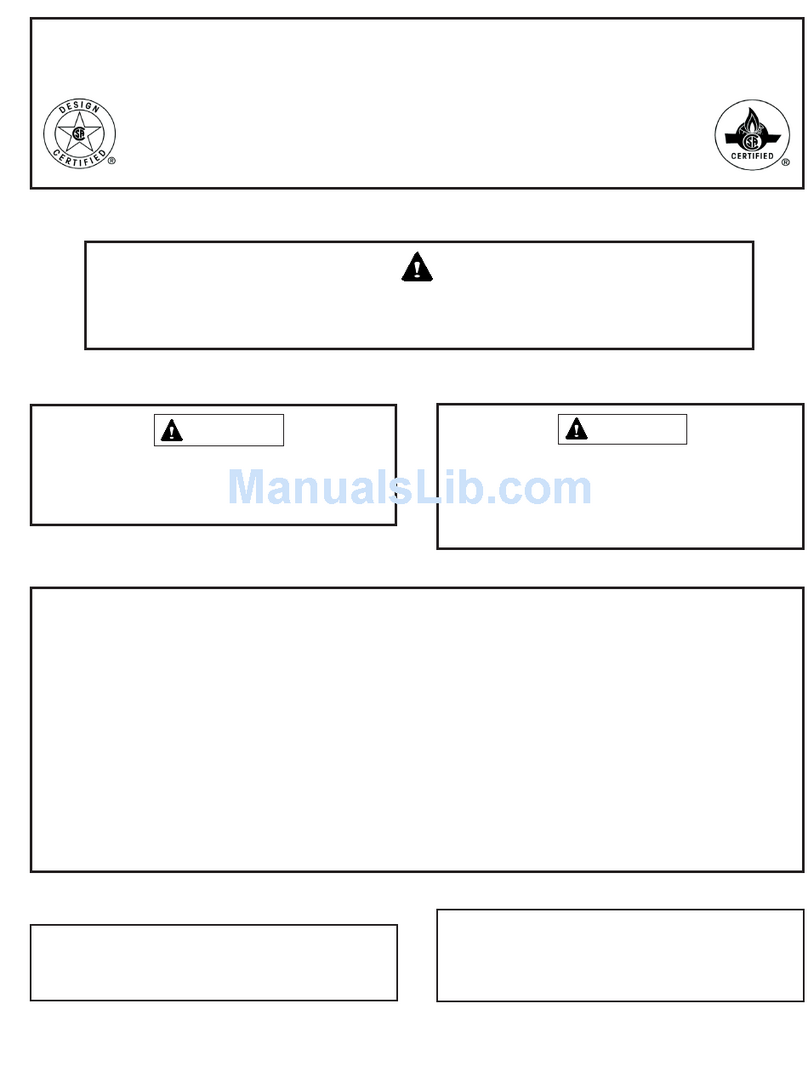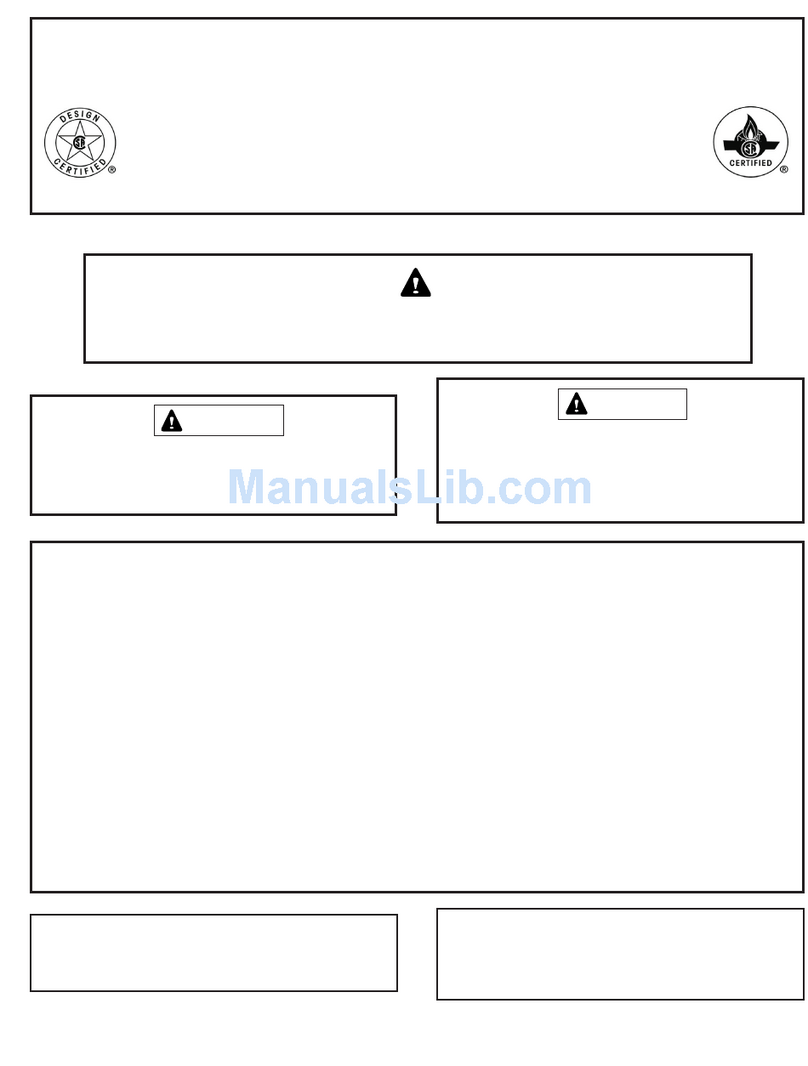
507148-01Page 8 of 14 Issue 1406
Thermostat
Locate the thermostat on an inside wall in a room usually
occupied during the day, such as a living room or dining
room, at a height of 4-1/2’ from the oor. Avoid direct sunlight
or supply air from a register. Make sure the location is not
adjacent to appliances such as ovens or lights. Wire the
thermostat with minimum of #18 AWG thermostat wire.
Continuous Blower Operation
The comfort level of the living space can be enhanced
when using this feature by allowing continuous circulation
of air between calls for cooling or heating. The circulation
of air occurs at half the full cooling airow rate. This can
produce more even temperatures throughout the home and/
or continuous operation of IAQ accessories.
To enable the continuous blower operation, place the
fan switch on the thermostat into the ON position. A call
for fan from the thermostat closes R to G on the blower
interface board. The control waits for a 1-second thermostat
debounce delay before responding to the call for fan by
ramping the circulating blower up to 50% of the cooling
speed. When the call for continuous fan is satised, the
control immediately ramps down the circulating blower.
Humidier
Terminals are provided on the control board which provides a
120-volt output to operate a humidier. The “HUM” terminal is
energized whenever the thermostat calls for heat. Refer to
furnace wiring diagram for specic connection information.
Electronic Air Cleaner
Terminals are provided on the control board for connection
of a 120-volt electronic air cleaner. The “EAC” terminal is
energized whenever the thermostat calls for heat, cooling,
or continuous blower. Refer to the furnace wiring diagram
for specic connection information.
Variable Speed Features
This furnace is equipped with a variable speed circulation
air blower motor that will deliver a constant airow within a
wide range of external static pressures. Other features of
this variable speed motor include:
Blower Ramp Up
The variable speed motor will slowly ramp up to normal
operating speed. This minimizes sound and increases
comfort by eliminating the initial blasts of air encountered
with standard blower motors.
Blower Ramp Down
At the end of a cooling or heating cycle, the variable speed
motor will slowly ramp down. If continuous blower operation
has been selected, the variable speed motor will slowly ramp
down to 50% of the selected cooling CFM.
Passive and Active Dehumidication
For situations where humidity control is a problem, a
dehumidication feature has been built into the variable
speed motor. At the start of each cooling cycle, the variable
speed motor will run at 82% of the rated airow for 7.5
minutes. After 7.5 minutes has elapsed, the motor will
increase to 100% of the rated airow.
To achieve additional dehumidification, remove the
dehumidify jumper located at the bottom right of the blower
interface board (see Figure 11) and connect a humidity
control that opens on humidity rise to the HUM and R
terminals. The HUM terminal on the blower interface
board must be connected to the normally closed contact
of the humidity control so that the board senses an open
circuit on high humidity. In this setup, the variable speed
motor will operate at 82% of the normal cooling airow rate
whenever there is a call for dehumidication. When the
relative humidity has been brought down to an acceptable
level, the cooling blower speed will return to 100% of design.
Circulating Airow Adjustments
Cooling Mode
The units are factory set for the nominal airow for each
model. Adjustments can be made to the cooling airow by
changing the position (A, B, C, or D) of the jumper plug on the
tap marked COOL (on the blower interface board) based on
the information provided in Figure 10. To determine what CFM
the motor is delivering at any time, count the number of times
the LED labeled CFM on the blower interface board ashes.
Each ash signies 100 CFM; count the ashes and multiply
by 100 to determine the actual CFM delivered (for example:
10 ashes x 100 = 1000 CFM).
Moving the jumper plug on the tap marked ADJUST from
the NORM position to the (+) or (–) position will increase or
decrease the cooling airow (Y or O call) by 15%. Changing
the position of the ADJUST jumper plug does not affect
heating airow except if a heat pump is used in conjuction
with the oil furnace. If a heat pump is used, moving the
ADJUST jumper plug to the (+) or (–) position will increase
or decrease the airow by 15% when operating in all heat
pump modes, but will not affect heating airow when the oil
furnace is used for heating.
For single stage cooling, jumper Y1 and Y2 to obtain rated
cooling CFM. In two stage cooling conguration, Y1 will
produce 70% of rated cooling CFM and Y2 will produce
100%.
Heating Mode
The unit as shipped is factory set to run at the middle of the
heating rise range as shown on the unit rating plate. The
jumper plug on the tap marked HEAT should remain in the
position (A, B, C, or D) listed in the HEAT Setting column
found in Figure 10.






























